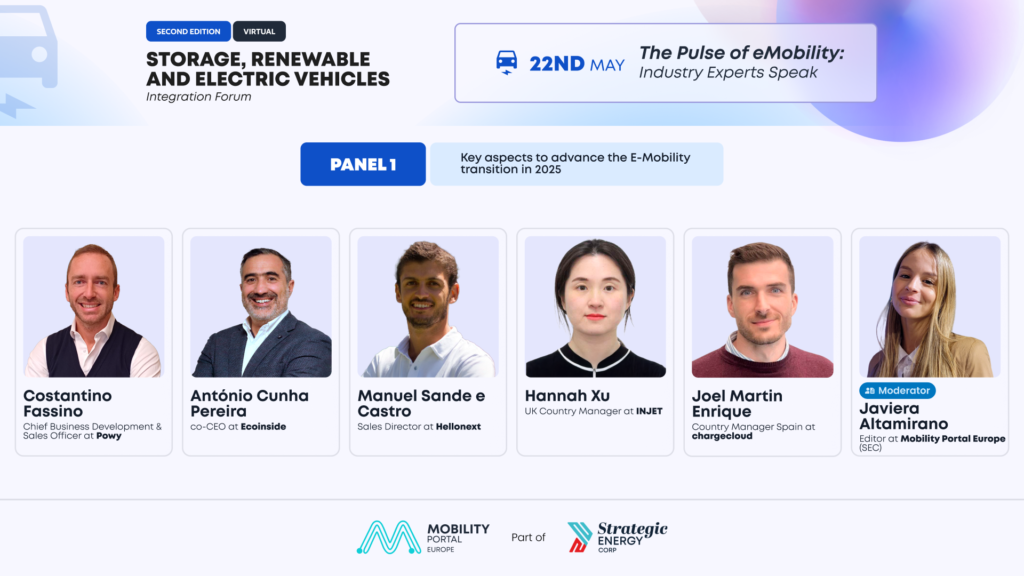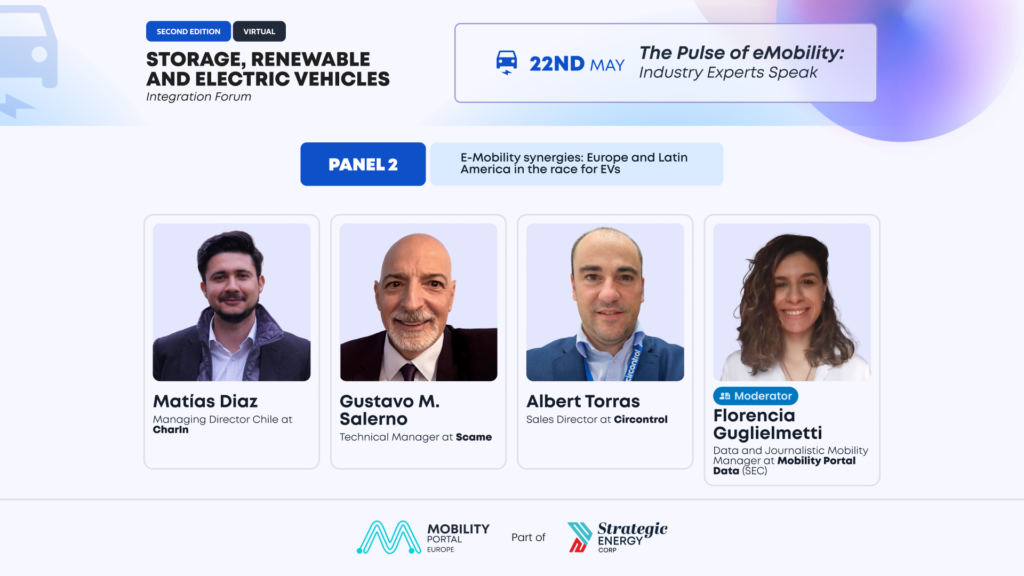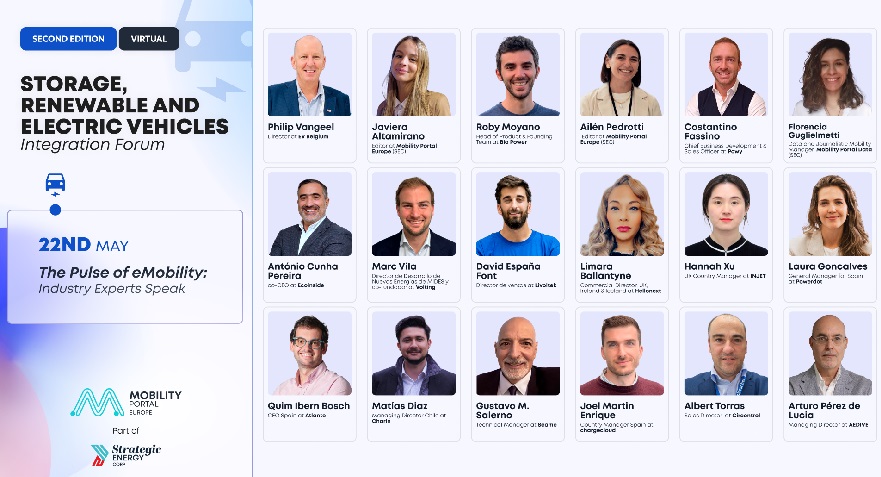On 22 May, the second day of the “Storage, Renewable and Electric Vehicles Integration Forum” took place, under the title “The Pulse of eMobility: Industry Experts Speak”.
The event, organised by Mobility Portal Europe, featured the participation of senior executives and high-level specialists in the field of electromobility.
Throughout the session, speakers addressed the key challenges facing the industry – from the urgency to scale up charging infrastructure and regulatory hurdles, to the experience of Charge Point Operators (CPOs) and the technological trends reshaping the market.
Below are some of the most impactful quotes that captured the tone of the discussions.
Philippe Vangeel – EV Belgium:
“The government is now prioritising plug-in hybrid vehicles (PHEVs) using the excuse that fully electric cars aren’t feasible due to a lack of charging points, which is contradictory because PHEVs also need to be plugged in. It sends the wrong message.”
Costantino Fassino – Powy:
“We do not believe that ultra-fast charging (HPC) is the sole solution, nor are AC charging or so-called medium-speed fast charging. Each customer deserves a charging experience tailored to their needs, and every location requires infrastructure suited to its specific context.”
António Cunha Pereira – Ecoinside:
“Our goal for 2025 is to at least double our charging points, increasing from 150 to 300. We are not aiming to be the biggest, but to provide a quality service wherever it is needed.”
Manuel Sande e Castro – Hellonext:
“Five years ago, having a 50 kilowatts charger was quite an achievement. Today, it’s almost obsolete. Customers demand higher power, greater flexibility and enhanced functionalities. In this sector, if you stand still, you disappear.”
Joel Martín – chargecloud:
“chargecloud is based in Germany, where we started nine years ago. This year, we launched operations in Spain and Italy, and by the end of 2025, we will also be present in the Netherlands and France.“
Hannah Xu – INJET:
“Strict regulation is not necessarily a barrier to innovation; however, overly stringent or inconsistent regulation can be. The EV market is growing, but penetration remains low. This presents a financial risk for CPOs. If the Government imposes barriers instead of offering support, innovation will inevitably slow down.”

Albert Torras – Circontrol:
“Brazil is an interesting market, but it remains closed due to tariff-related issues. We hope that, through Mercosur, access to the country will become easier for us.”
Matías Diaz – CharIN:
“The idea is for Latin America to have a single interoperability standard. However, Mexico is relevant because it is very likely that they will choose NACS.”
Gustavo M. Salerno – Scame:
“Until there is regulation on the price per kWh, electromobility will not take off, as no one will want to invest.”

Laura Goncalves – Powerdot:
“Spain is one of the few places where the utility only begins its work once the operator has finished theirs. In other countries, this happens in parallel, saving a great deal of time. This is something we would request to improve the situation, but even so, we remain committed here.”
David España – LIVOLTEK:
“For us, the client is the operator. We aim to adapt to their needs and respond to their feedback. Although we are a Chinese manufacturer, product development for Europe is defined from Spain, which serves as the nerve centre of our expansion.”
Arturo Pérez de Lucia – AEDIVE:
“Spain has always been a B2B market, and the major mistake was designing all incentives with a focus on private citizens. Portugal is a clear example of a B2B-oriented model; their fiscal reform targeted fleet growth, which led to a rise in registrations.”
Marc Vila – Volting:
“We must look to countries like Portugal or France to identify best practices in installation and execution. One of the key lessons is that by enforcing interoperability, infrastructure development accelerates significantly.”
Quim Ibern Bosch – Atlante:
“We’re progressing a bit slower than other countries, but we already operate 150 fast and ultra-fast charging points, and expect to double that by year-end to reach between 300 and 350 in operation.”









